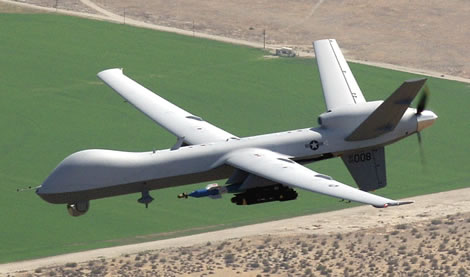

Some European countries may consider an Israeli made unmanned air system (UAS) as a platform for a “Black program” to create a European medium-altitude/long-endurance (MALE) armed UAS, I-HLS reports.
This is the assessment of European sources familiar with the advanced Israeli made UAS.
According to Aviation Week, frustrated by apparent U.S. ambivalence in granting authority to integrate weapons onto its Reaper aircraft, the Italian air force is looking at possible alternatives, including a yet-to-be-announced “black program” to create a European Medium Altitude/Long-Endurance (MALE) armed UAV. Several European air forces have long planned to arm their UAS but non of the NATO nations have sofar reached this goal.
Membersd can get further analysis for this article
While the Italian aircraft manufacturer Alenia Aermacchi is already developing a MALE drone (SKY-E), Italy decided to purchased the General Atomics MQ-1 Predator and MQ-9 because they were readily available to support operations in Afghanistan. The decision has put Italy at the whim of the U.S. government in terms of upgrades. But weaponizing these UAVs is a “high priority” for Italian forces, says Gen. Alberto Rosso, logistics branch chief for the Italian air force. “The U.S. is not the only country with the capability to provide those capabilities,” he says. “If we are unable to meet those requirements, we are already looking for alternatives.”
Along those lines, Rome is in talks with potential European partners to move forward with a weaponized UAS that Debertolis refers to as a “Super MALE.” One of its principal requirements would be for it to deploy weapons, he says.
This “Super MALE” is currently a “black program,” Debertolis says, providing little details. Work has not yet begun because partners haven’t yet agreed on a way ahead. But the goal would be to field something using existing technology by around 2017.
This project, if it moves forward, could be unveiled at the Paris Air Show in Le Bourget next month, Debertolis said.
















